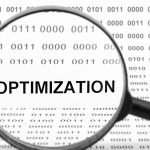In today’s business world, making smart choices is key to being on top. Now, thanks to retail sales analytics, companies can dig deep into data. This helps them make smarter, data-based decisions that beat their rivals.
Retail sales analytics is all about using data’s power to find important info. It looks at how customers act, what’s trending, and how a business is doing. This helps companies understand what customers really want, predict sales better, and boost their success.
With the right retail analytics, companies can lead the pack. They see trends early and change strategies fast. This way, they grab new chances before others do. They keep up with what customers need by adapting quickly.
This approach also means businesses know their customers better. They can look at who buys what, and then offer products that hit the mark. Making things just right for customers not only makes them happier but also keeps them coming back.
To really use retail sales analytics, companies need the best tools. They should use top analytics software, smart algorithms, and clear data visuals. Having a great team to crunch the numbers and keeping data safe are also key.
Key Takeaways:
- Retail sales analytics empowers businesses to make informed decisions based on data insights.
- Data analytics helps businesses understand customer behavior and market trends.
- Retail sales analytics provides a competitive advantage by predicting emerging trends.
- Investment in tools and technologies is necessary for successful implementation.
- Analyzing customer preferences helps tailor products and improve customer satisfaction.
The Role of Data Analytics in Decision-Making
Data analytics is crucial in the modern business world. It helps organizations make smart decisions. These decisions drive their success by using analytics, companies can find insights in big data. They then use these insights to outperform their competition. Let’s see how data analytics aids in making good decisions and supports real-time choices.
Analyzing Customer Behavior and Market Trends
Data analytics shines when looking at customer actions and market shifts. It examines lots of data to find out what customers like, how they buy, and what they need. This helps firms decide how to develop products, market them, and be better at customer service.
It also gives a deep view of market swings. This means companies can spot new trends, see how things might change, and adjust their plans. This helps them get ahead, avoid pitfalls, and keep their lead in the market.
Optimizing Operational Performance
Data analytics doesn’t stop with customers. It also helps companies run better. By studying how they operate, firms can see where they’re wasting time, where they can do better, and spot areas to improve.
It’s key for making quick decisions too. Using live data and analytics tools, companies can respond fast to market moves and what customers are asking for. Being quick and ready means they can take on new chances as they come.
“Data analytics empowers businesses to make decisions based on facts and evidence rather than intuition or guesswork. It brings objectivity and precision to the decision-making process, resulting in better outcomes.”
Data analytics gives companies the info they need to choose well. By understanding their customers, market trends, and how they operate, firms can improve their strategies, make customers happier, and beat their rivals. Thanks to quick decision support, firms can be flexible and fast, keeping step with market changes. Using data analytics is key for doing well in today’s world.
In the next section, let’s see how companies can use data analytics to get ahead.
Gaining a Competitive Advantage with Data Analytics
Data analytics helps businesses stand out in today’s quick market. It uses tools like market trend analysis and predictive analysis. These tools help businesses make smart choices ahead of time.
One big benefit of data analytics is spotting market trends. By looking at old data, companies see what’s new and catch on early. This lets them change their plans and products quickly. They can then meet what customers want, beating their competition.
Data analytics allows businesses to identify market trends and predict future trends based on historical data.
Predictive analysis is key too. It uses math and algorithms on lots of data to guess what’s next with a good chance of being right. This helps companies get ready for changes. They can act first to keep their lead.
Understanding customers is crucial for success. Data analytics dives into customer habits, likes, and buys. This gives a full picture of who they’re selling to. With this knowledge, companies can make their offers fit customers like a glove. This makes buyers happy and keeps them coming back.
Examples of Competitive Advantages Enabled by Data Analytics:
| Competitive Advantage | Explanation |
|---|---|
| Improved Customer Targeting | Using data analytics, businesses can segment their customer base and create personalized marketing campaigns, resulting in higher conversion rates and customer satisfaction. |
| Optimized Pricing Strategies | Data analytics allows businesses to analyze market dynamics, customer preferences, and pricing trends, enabling them to set optimal prices and maximize revenue. |
| Enhanced Supply Chain Efficiency | By applying data analytics to supply chain processes, businesses can optimize inventory levels, streamline logistics, and reduce costs, resulting in improved operational efficiency. |
| Real-Time Decision-Making | With access to real-time data and insights, businesses can make informed decisions promptly, respond to market changes, and seize opportunities as they arise. |
To sum up, data analytics arms businesses with powerful insights. By using tools like reading market trends, predicting what’s next, and knowing their customers well, companies can lead. With this info, they can make decisions based on facts. This leads to success in the ever-changing market.
Implementing Data Analytics in Business
Data analytics in business means using the right tools and technologies to make better decisions. This includes advanced analytics software, machine learning, and data visualization. With these, companies can improve how they analyze data and find valuable insights.
Analytics software lets companies look at lots of data to find important info. With it, they can see trends and relationships. Advanced software helps with tricky math, predicting future trends, and modeling data for a competitive advantage.
Machine learning is crucial too. It allows businesses to process large amounts of data quickly, find hidden patterns, and predict future events. This helps them make smart decisions fast.
Data visualization is key in making complex data easy to understand. It turns numbers into interactive charts and graphs for better exploration. With clear visuals, decision-makers can quickly understand important information and act on it.
Having a skilled team is vital for successful data analytics. Data analysts, scientists, and statisticians are needed to get insights from data. They have the knowledge to handle and explain data, giving valuable answers for business leaders.
Overcoming challenges is a big part of using data analytics. Businesses need to keep data safe and private. They should use strong security, follow data protection rules, and check data use regularly. This builds trust with customers and partners.
It’s also important to join data from different places into one view. Solid data governance and the right tech can help. They make sure the data used for analysis is correct and up-to-date.
By choosing the best tools, having an expert team, and solving challenges, businesses can truly benefit from data analytics. They will make smarter decisions and stand out in the competitive market.
The Analytics Implementation Framework
Putting data analytics in place successfully follows certain steps. First, clearly state what you want to achieve with analytics. This is the foundation for everything.
Then, check the data you have to make sure it’s good for analysis. Fix any issues so you have the best data possible.
Next, pick the tools and tech that match your goals. Make sure they can grow with your needs, work together, and are easy to use.
Building a team of analytics experts comes next. They will guide the whole process and draw valuable insights from the data.
Creating a solid data governance plan is also critical. It makes sure your data is accurate, secure, and follows the law. Include who can access the data, who owns it, and how data should merge.
Now, set up the technical side, like computers and software, for storing and analyzing data. Think about how it will grow as your data does.
After technical setup, merge and clean your data to make it ready for analysis. This makes sure your insights are reliable.
Then, it’s time to uncover insights from your data. Use statistical methods to find meaningful patterns and trends. Think about how these findings relate to your original goals.
Use visualization tools to share these findings in an easy-to-understand way. Interactive charts and reports help everyone in the business make informed decisions.
Finally, keep improving based on what you learn. This step is ongoing. It ensures your analytics efforts stay effective as your business changes.
Following this framework helps businesses smoothly put analytics into action. It guides them through challenges and lets them get the most out of their data for wise decision-making.

Future Trends in Data Analytics
The future of data analytics looks bright and promising. It’s going to change how companies make important choices. The big leap forward is tying artificial intelligence (AI) and machine learning with data analytics. This will improve the way companies predict trends and understand consumers and markets better.
But, as data analytics gets better, there are ethical hurdles to overcome. It’s crucial to use data responsibly, protect privacy, and be transparent. Finding the right way to use data without invading privacy is key. It’s important to keep the public’s trust and a good reputation.
For companies to lead, they need to watch for new data analytics tech. Edge analytics and blockchain are two to keep an eye on. Edge analytics lets data be processed closer to where it’s used, making real-time decisions quicker and easier. Blockchain makes data storage safer and more reliable. By adopting these, companies can be ready for the data-focused future.
FAQ
What is retail sales analytics?
How does data analytics help in decision-making?
How can data analytics give businesses a competitive advantage?
What is needed to implement data analytics in a business?
What are the future trends in data analytics?
Source Links
- https://medium.com/@mprakash7193/how-businesses-can-leverage-data-analytics-for-informed-decision-making-and-competitive-edge-1cb18dc55185
- https://www.linkedin.com/pulse/leveraging-data-analytics-informed-decision-making-richard-rajwayi-ebkhf
- https://www.forbes.com/sites/forbesbusinessdevelopmentcouncil/2023/12/14/data-driven-decision-making-in-retail/





